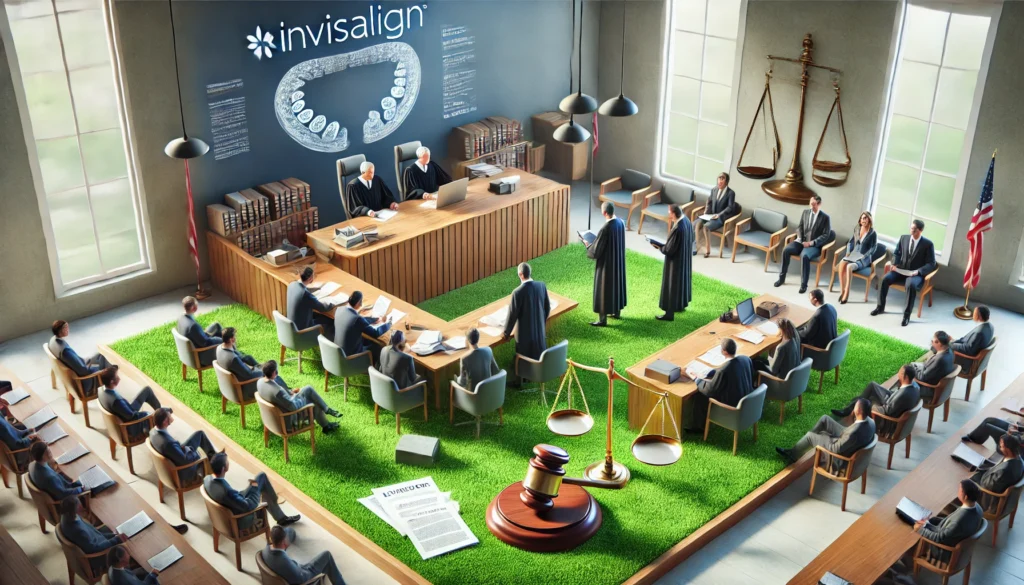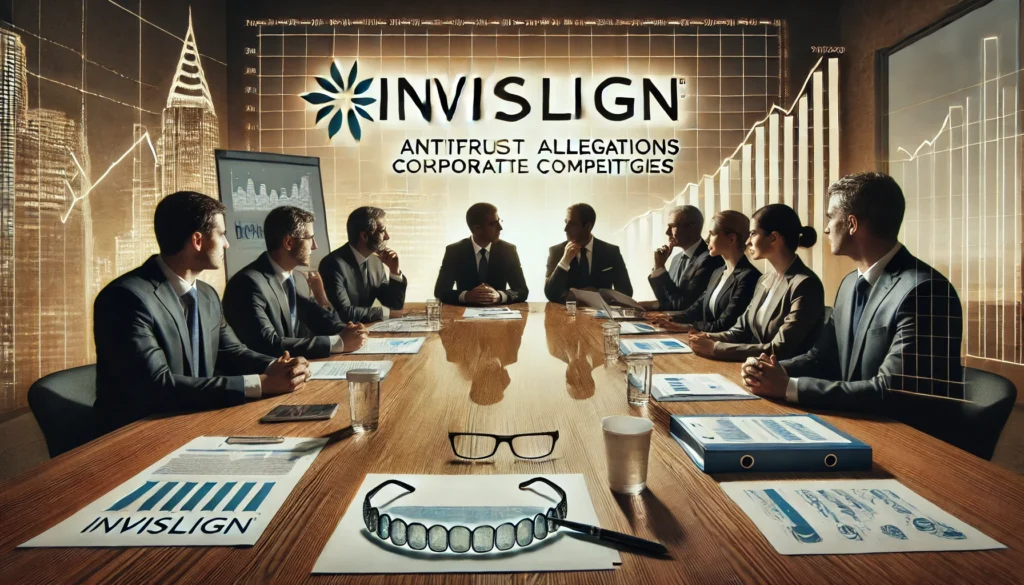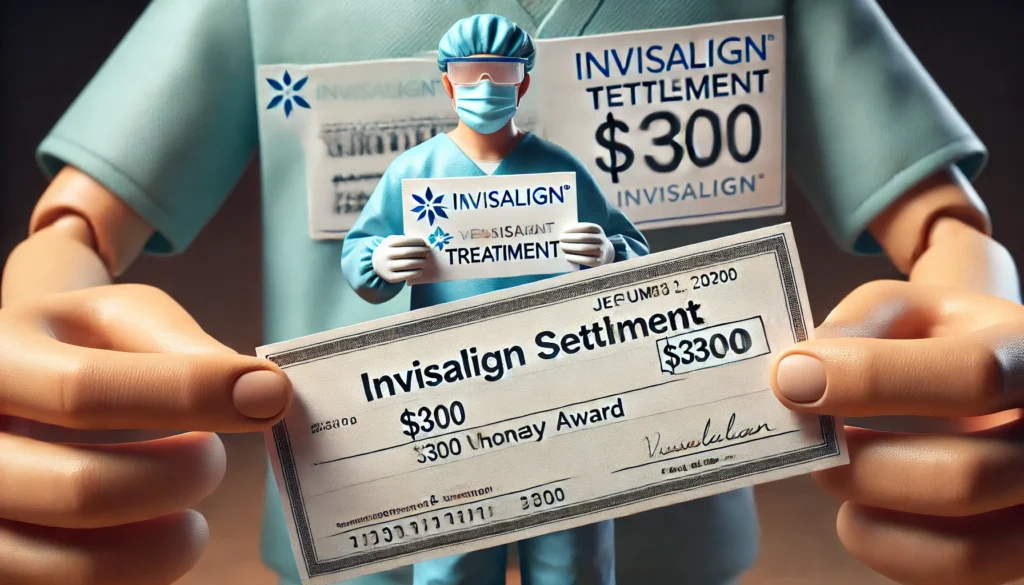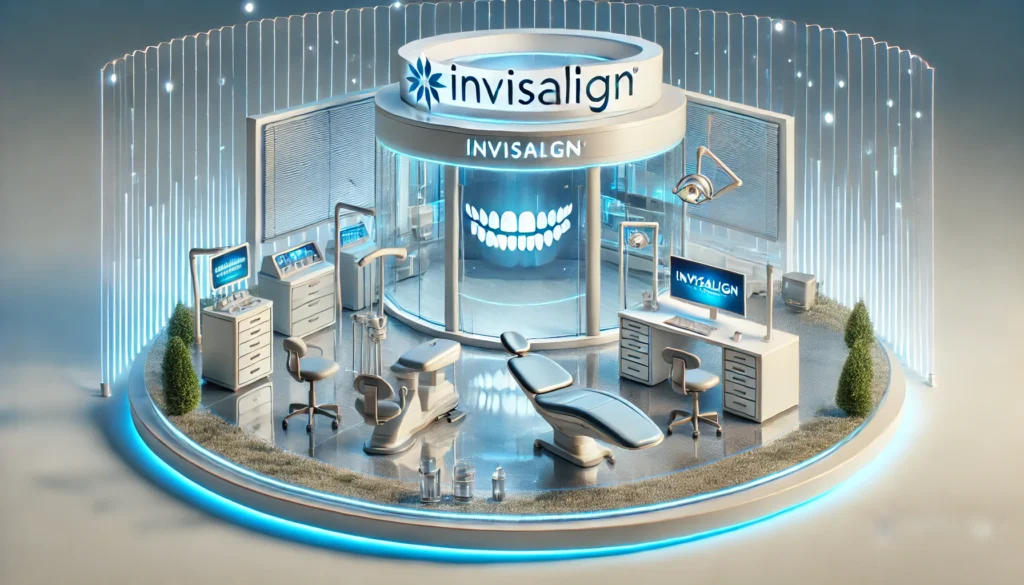Invisalign, created by Align Technology, is a popular alternative to traditional metal braces for people looking to straighten their teeth. It uses clear, removable aligners, offering a discreet and comfortable way to improve dental alignment. Since its launch in 1999, Invisalign has grown to dominate the clear aligner market globally.
However, in recent years, Align Technology has faced several legal challenges that have raised questions about its business practices and market dominance. One of the most significant of these is an antitrust lawsuit filed against the company, alleging that it engaged in anti-competitive behavior to inflate prices and restrict market competition. This article provides a detailed overview of the Invisalign lawsuit, its impact on the orthodontic market, and the lessons it offers for both consumers and companies.
Invisalign Lawsuit: What You Need to Know About the $27.5 Million Settlement
The Invisalign lawsuit is a significant legal case involving Align Technology, the maker of the popular Invisalign clear aligners. This case revolved around allegations that the company engaged in anti-competitive practices to maintain its dominance in the clear aligner market. Specifically, it was accused of working to inflate prices and block competition, particularly from SmileDirectClub, a rival offering more affordable at-home aligner options.
The lawsuit became a class-action case, covering consumers who purchased SmileDirectClub aligners between October 22, 2017, and August 18, 2022. The plaintiffs argued that these consumers were harmed financially due to the alleged price manipulation caused by Align’s actions.
In 2024, Align Technology agreed to a $27.5 million settlement to resolve the claims without admitting any wrongdoing. The settlement provides monetary compensation to approximately 1.45 million eligible consumers and includes an additional $300 voucher for Invisalign treatment. This resolution aims to address the financial burden placed on consumers while avoiding prolonged legal proceedings for Align.
This lawsuit sheds light on critical issues in the orthodontic industry, including fair competition and transparent pricing. For consumers, it highlights the importance of staying informed about their options and the potential impact of corporate behavior on the cost of healthcare. For companies, it serves as a reminder of the legal and ethical responsibilities involved in maintaining market leadership.
Background on Invisalign
Invisalign is a modern orthodontic treatment that uses clear plastic aligners to gradually move teeth into their desired position. These aligners are custom-made for each patient, offering a more comfortable, discreet, and removable alternative to traditional metal braces. Invisalign has become a preferred treatment for many adults and teenagers seeking to avoid the visibility and discomfort of metal braces.
Align Technology, the company behind Invisalign, has become a global leader in the clear aligner industry. Since its inception, the company has expanded its products to include a range of orthodontic treatments, catering to both dentists and consumers. While Invisalign is undoubtedly a pioneering product, it has faced increasing competition in recent years, especially from companies like SmileDirectClub, which offers more affordable, at-home aligner options. This competitive environment has led to several legal disputes, including the notable antitrust lawsuit involving Align Technology.
The Invisalign Lawsuit
The lawsuit at the center of the controversy involves allegations that Align Technology participated in anti-competitive practices. Specifically, the lawsuit claims that Align sought to suppress competition in the clear aligner market by manipulating prices and limiting consumer access to affordable alternatives. The suit was filed in 2024, with plaintiffs arguing that Align’s actions caused prices for clear aligners to rise unfairly, harming both consumers and smaller competitors in the market.
The legal action is a class-action lawsuit, meaning it includes a large group of individuals who were allegedly impacted by these practices. The class action targets consumers who purchased SmileDirectClub aligners between October 22, 2017, and August 18, 2022. These customers claim that Align’s actions inflated the cost of aligners, making them more expensive than necessary and limiting the availability of affordable alternatives.
At the heart of the lawsuit are allegations of price-fixing and other anti-competitive strategies designed to preserve Align Technology’s market share and suppress competition from emerging companies like SmileDirectClub.
Settlement Details
In August 2024, Align Technology agreed to settle the lawsuit for $27.5 million. This settlement, while not an admission of guilt, was designed to resolve the legal dispute without a prolonged trial. The settlement also includes compensation for the affected consumers, many of whom had purchased aligners from SmileDirectClub during the period covered by the lawsuit.
Under the terms of the settlement, approximately 1.45 million consumers will be eligible to receive compensation. The payout will come in the form of a direct monetary award, which aims to reimburse consumers for the inflated prices they paid for their aligners. In addition to this compensation, consumers will receive a $300 coupon toward Invisalign treatment, offering them a potential alternative to SmileDirectClub aligners if they wish to switch to Align’s products.
While Align did not admit to any wrongdoing as part of the settlement, the resolution allows the company to avoid the time and expense of a protracted legal battle. This agreement has brought some closure to the case, though it has not silenced the broader conversation about the company’s business practices.
Broader Legal Issues Involving Align Technology
The Invisalign lawsuit is part of a broader pattern of legal challenges faced by Align Technology. Beyond the antitrust case, the company has been involved in multiple lawsuits over the years, primarily concerning allegations of monopolistic behavior. As the dominant player in the clear aligner market, Align has been accused of using its market power to prevent competition and maintain high prices.
Another key area of legal concern for Align Technology has been intellectual property rights. The company has been involved in several patent disputes, particularly with competitors like SmileDirectClub. These legal battles often revolve around the use of patented technologies related to clear aligners, with companies seeking to protect their innovations from being copied by rivals. These patent infringement cases are significant because they have the potential to reshape the competitive landscape and impact the availability of affordable treatment options for consumers.
The combination of antitrust allegations and intellectual property disputes has made Align Technology a focal point in the ongoing conversation about fairness and competition in the orthodontic market.
Impact on Consumers
The lawsuit and subsequent settlement have had a direct impact on consumers. For those affected by the alleged price inflation, the $27.5 million settlement offers financial relief. The compensation will go to individuals who purchased SmileDirectClub aligners during the period between 2017 and 2022, providing them with some restitution for the higher-than-expected prices they paid.
Additionally, the settlement includes a $300 coupon for Invisalign treatment, allowing affected consumers the chance to switch to Align’s clear aligners if they wish. This could provide a better alternative for some consumers, especially those who feel that SmileDirectClub did not meet their expectations.
The legal action has also brought attention to the importance of transparency and fairness in pricing within the orthodontic industry. For consumers, it highlights the need to stay informed about the costs of the treatments they purchase and be aware of the potential impact of corporate practices on their finances.
Align Technology’s Response
Align Technology has consistently denied any wrongdoing in connection with the lawsuit. The company maintains that its business practices have always been in compliance with applicable laws and regulations. In a public statement, Align emphasized that the settlement was reached in order to avoid the costs and distractions of ongoing litigation, rather than as an admission of fault.
Despite the legal challenges, Align Technology remains a major player in the clear aligner market, with a robust portfolio of products and a strong customer base. The company has stated that it is committed to continuing to provide high-quality orthodontic treatments while adhering to legal and ethical standards. Align’s response to the lawsuit reflects its intention to move forward and focus on innovation, though the case has left some lingering questions about the company’s market practices.
Lessons and Broader Implications
The Invisalign lawsuit offers several important lessons for both the orthodontic industry and consumers. For companies in the market, the case underscores the need for ethical business practices, particularly when it comes to pricing and competition. Anti-competitive behavior can lead to legal challenges and damage a company’s reputation, even if it is ultimately resolved through a settlement.
For consumers, the lawsuit serves as a reminder of the importance of being aware of the products they purchase and the pricing structures involved. Legal actions like this one help to hold companies accountable and ensure that consumers are not taken advantage of by unfair business practices.
The case also highlights the role of competition in the marketplace. A healthy, competitive market benefits consumers by driving down prices and increasing access to high-quality products. When companies engage in anti-competitive practices, it not only harms consumers but can also stifle innovation and limit choices in the market.
Conclusion
The Invisalign lawsuit has shed light on significant issues within the clear aligner market, particularly regarding anti-competitive practices and price inflation. While Align Technology has settled the case for $27.5 million, the lawsuit has sparked important discussions about business ethics, pricing transparency, and market competition in the orthodontic industry. The case has not only provided financial compensation to affected consumers but has also raised awareness about the importance of fair practices in healthcare and the consumer goods industry.
As the orthodontic market continues to evolve, it is crucial for both companies and consumers to recognize the value of competition and transparency. Legal actions like the Invisalign lawsuit ensure that companies are held accountable for their business practices, ultimately benefiting consumers and encouraging a healthier, more competitive marketplace.
FAQs
What was the main allegation in the Invisalign lawsuit?
The lawsuit alleged that Align Technology engaged in anti-competitive practices to inflate prices and stifle competition.
Who was eligible for compensation from the settlement?
Consumers who purchased SmileDirectClub aligners between October 22, 2017, and August 18, 2022, were eligible.
What was the settlement amount in the Invisalign lawsuit?
Align Technology agreed to a $27.5 million settlement to resolve the class-action claims.
Did Align Technology admit to any wrongdoing in the case?
No, Align denied all wrongdoing and settled to avoid prolonged legal expenses and distractions.
What additional benefit did affected consumers receive?
Eligible consumers also received a $300 coupon toward Invisalign treatment as part of the settlement.
Article Recommendations
Diddy Lawsuit Lil Rod Documents: How This Case Could Reshape Legal Practices
Wingate Wilderness Therapy Lawsuit: How Legal Scrutiny Shapes the Future of Wilderness Therapy
Endurance Warranty Lawsuit: Essential Tips for Protecting Yourself from Contract Misunderstandings




